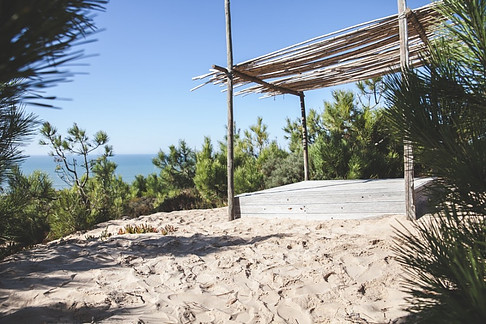
In tropical regions there are usually ample supplies for building a shelter. Where the temperatures are very high and the shelter is exposed directly to the sun, make roofs with two layers with an airspace to encourage cooling airflow. With this type of construction, most of the heat striking the upper roof will dissipate and the air passing through the gap will lower the temperature of the lower roof. To be effective, the distance between the two layers should be between 8 – 12in (20 – 30cm). Double layers of even permeable cloth will help keep out rain if angled properly.
Such a construction *could* be useful in desert environments as well, except for the following reasons:
- Lack of building resources
- Unforgiving sun.heat / lack of natural cover
- Unpredictable wind patterns (e.g. sandstorms)
- Water & Food not as plentiful
It would take you too long to find any building resources, assuming any were available. This is time and energy that could be better used in either finding water and food or finding a way out of the harsh conditions. The wind in tropical regions are useful in cooling as they help move the more humid air around, creating cooler conditions. The wind in desert or arid regions, assuming there is any, is likely to be dry and carry sand with it – a not entirely pleasant experience.
So, while building a complex shelter in tropical regions is likely to be more feasible and helpful, doing so in a desert or arid region will likely be a waste of valuable time and resources.
Fire
In tropical environments, everything is likely to be damp and hard to ignite. To compensate for this, strip off the outside of any standing dead wood you find. Use this to start your fire. Also, dry bamboo makes excellent tinder (always store some in a dry area). In addition, another item that would make excellent kindling is a termite nest.